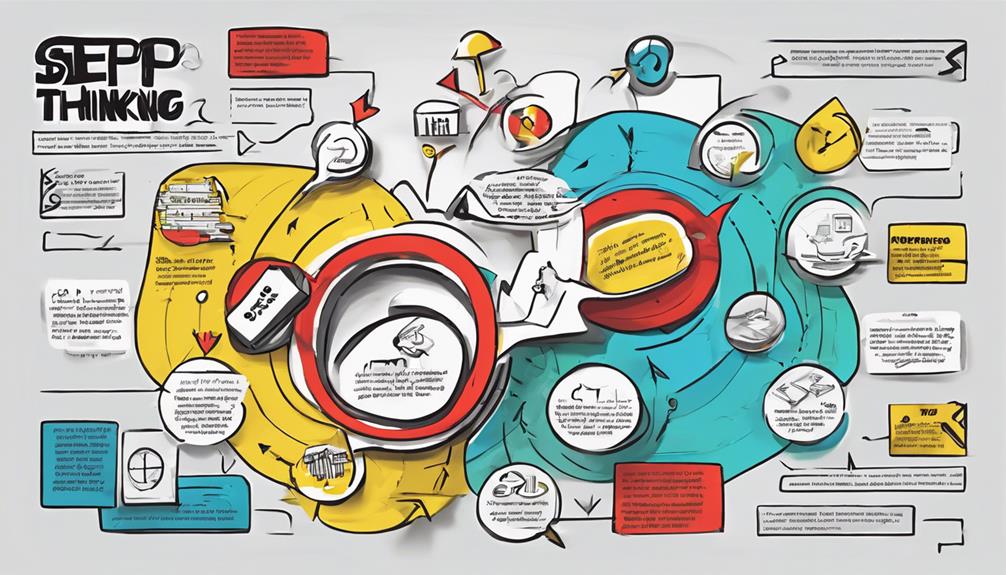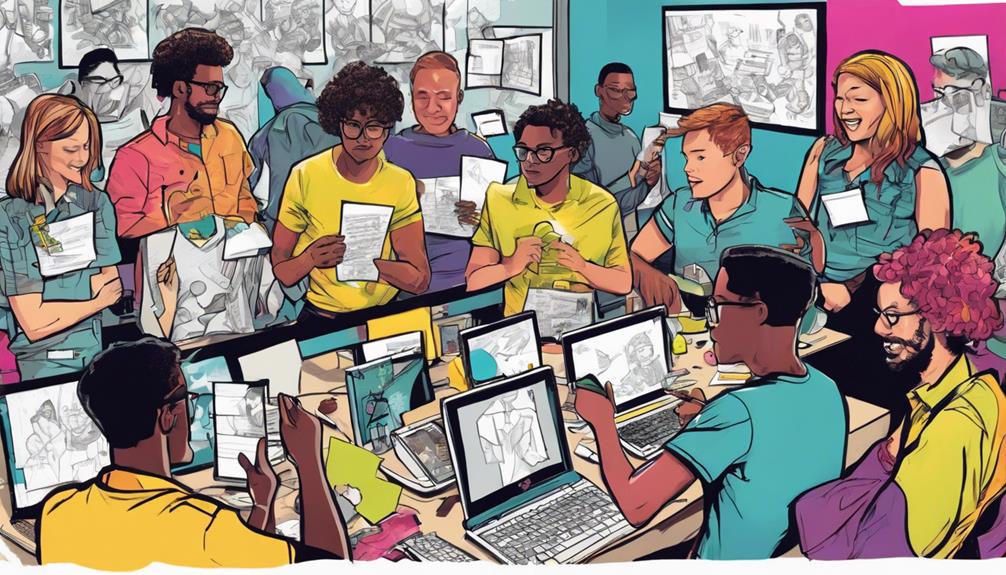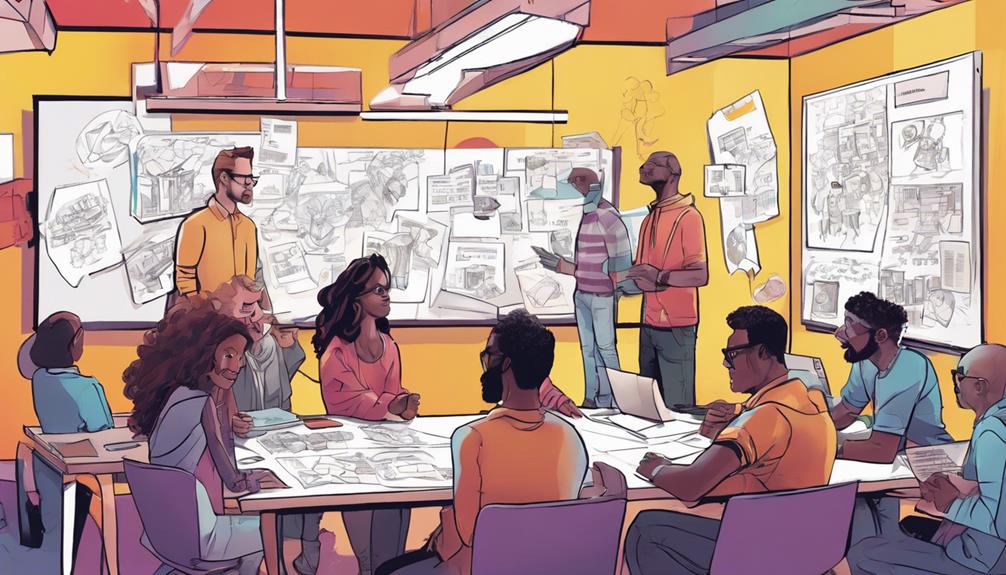Discover the transformative realm of LUMA Design Thinking! Explore courses such as Design Thinking Essentials and Making Remote Teamwork Human-centered. Engage in live, interactive sessions guided by proficient instructors with practical applications. Immerse yourself in the human-centered LUMA System for innovative problem-solving. From personalized guidance to devising actionable strategies, LUMA's approach enhances your design thinking skills. Get ready to discover new possibilities and excel in human-centered design with LUMA Institute. There's much more to explore about LUMA's dynamic training, engaging content, and practical methodologies.
Key Takeaways
- LUMA Institute offers online courses in design thinking skills and techniques.
- Courses emphasize practical applications and teamwork skills.
- Instructors like Deisiane Bresolin and Jori MacNaught provide real-world examples.
- The 'Innovating for People' handbook contains 36 design methods for enthusiasts.
- Training focuses on clarity, simplicity, and immediate applicability of concepts.
Course Offerings
Explore the wide array of online courses offered by LUMA Institute in design thinking skills and techniques. LUMA provides a variety of courses tailored to enhance your design thinking abilities. Through these online learning experiences, you can immerse yourself in methods like Design Thinking Essentials, Making Remote Teamwork Human-centered, and Facilitating Great Meetings. For Enterprise clients, LUMA offers private course options with flexible pricing structures and discounts.
These courses cater to different aspects of design thinking, equipping you with the necessary skills to excel in your professional endeavors. Whether you're looking to improve remote teamwork or enhance your facilitation techniques, LUMA's course offerings are designed to meet your specific needs. With limited seats available in each section, you can expect personalized attention and interactive sessions.
Additionally, select courses incorporate MURAL sections, providing a dynamic online learning environment to further enhance your learning experience. So, get immersed in LUMA's online courses and elevate your design thinking skills today!
Course Details

Explore the specifics of LUMA Institute's diverse range of design thinking courses to gain a deeper understanding of their content and structure. The courses offered, such as Design Thinking Essentials, Making Remote Teamwork Human-centered, and Facilitating Great Meetings, cater to different skill levels and objectives within the field of design thinking.
While Design Thinking Essentials is tailored for beginners, other courses require prerequisites and utilize the LUMA System, a framework incorporating various human-centered design methods.
Each course section is limited to 12 seats, ensuring a personalized learning experience with live sessions and assignments spread over three weeks. Renowned instructors like Deisiane Bresolin and Jori MacNaught enrich the courses with real-world examples and straightforward language, enhancing the educational journey.
Additionally, private course options are available, with discounts for LUMA Enterprise clients and the incorporation of MURAL sections for specific courses.
Course Format

You'll experience live learning sessions in the LUMA Design Thinking course that span over three weeks.
These sessions are interactive and limited to 12 participants per section.
The course concludes with a final live session where you'll develop a tangible traction plan.
Live Learning Sessions
The live learning sessions in LUMA Anywhere courses span over three weeks and feature interactive instruction and assignments. These sessions are conducted using remote technologies by instructors skilled in online instruction. Participants benefit from real-world examples presented in plain language, enhancing the learning experience.
Throughout the course, participants remain in the same section, fostering a sense of continuity and community. Each course section is limited to 12 seats, ensuring personalized attention and engagement. For select courses, MURAL sections are available, adding a visual dimension to the learning process.
Additionally, private course options are offered, catering to specific organizational needs. Pricing varies for these courses, with discounts available for LUMA Enterprise clients. The combination of live learning sessions, remote technologies, and expert instruction creates a dynamic and collaborative learning environment in LUMA Anywhere courses.
Final Session With Plan
In the final session with a plan in LUMA design thinking courses, participants focus on creating a traction plan for practical implementation of their newly acquired skills. This session marks the culmination of the course, where design teams showcase their understanding of the LUMA System of Innovation and their plans for action. The traction plan developed during this final session serves as a roadmap for taking the design thinking process forward in real-world scenarios. Participants work on applying the learned design thinking skills to concrete challenges, solidifying their learning and preparing to implement design thinking strategies effectively.
| Important Aspects | Description | Benefits |
|---|---|---|
| Traction Plan | Outlines practical steps | Guides implementation process |
| LUMA System | Framework for innovation | Enhances problem-solving |
| Design Teams | Collaborative approach | Diverse perspectives |
Instructors
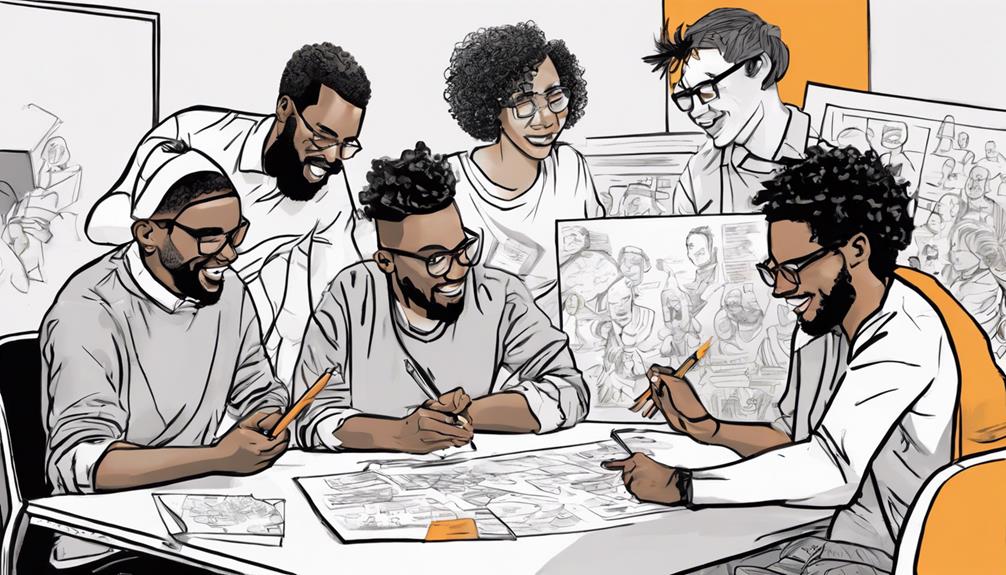
You'll appreciate the expertise of LUMA Institute's instructors, who bring a wealth of experience in human-centered design to the table.
Their teaching approach, exemplified by professionals like Deisiane Bresolin and Jori MacNaught, emphasizes real-world examples and straightforward language for effective learning.
Through practical applications and a focus on teamwork and facilitation skills, these instructors guarantee you receive high-quality training in design thinking.
Expertise of Instructors
Instructors at LUMA Institute bring a wealth of experience in human-centered design to their teaching approach. With a focus on enhancing design thinking skills through online instruction, these experts stand out for their dedication to providing high-quality education in an accessible format.
Here are some key points regarding the expertise of LUMA's instructors:
- Real-World Examples: They use real-world examples and plain language to teach design thinking skills effectively.
- Diverse Expertise: Instructors like Deisiane Bresolin and Jori MacNaught bring a diverse range of skills to the courses, enriching the learning experience.
- Online Proficiency: Skilled in online instruction and remote technologies, they ensure that the learning environment is engaging and interactive.
- Teamwork and Facilitation: Their expertise extends beyond design to teamwork, facilitation, and collaboration, enhancing the overall educational experience.
The breadth of expertise that these instructors bring guarantees that students receive a thorough education in human-centered design and design thinking skills.
Teaching Approach
Drawing on their extensive experience in human-centered design, LUMA Institute instructors implement a hands-on teaching approach that prioritizes practical application and real-world relevance in imparting design thinking skills to students.
Through real-world examples and plain language, instructors like Deisiane Bresolin and Jori MacNaught make certain that students grasp the concepts effectively. These skilled professionals are well-versed in online instruction and remote technologies, adapting seamlessly to virtual learning environments.
By incorporating their expertise in teamwork, facilitation, and design, LUMA Institute instructors create engaging and interactive learning experiences for students. Whether through live virtual sessions or pre-recorded materials, the instructors guarantee that the content is accessible and digestible.
Their dedication to providing a dynamic learning environment equips students with the necessary tools to apply design thinking skills in practical scenarios, preparing them for success in the rapidly evolving professional landscape.
Practical Applications
Experience firsthand the practical applications of design thinking skills under the expert guidance of LUMA Institute instructors like Deisiane Bresolin and Jori MacNaught. These seasoned professionals in human-centered design will empower you with the knowledge and tools necessary to excel in the field of design thinking.
Here's how their expertise translates into practical applications:
- Real-world Examples: Instructors use tangible instances to illustrate the application of design thinking skills effectively.
- Plain Language Instruction: Concepts are taught in a straightforward manner, ensuring easy comprehension and immediate applicability.
- Engaging Online Learning: Utilizing remote technologies, instructors create interactive and engaging learning experiences.
- Dynamic Hands-On Training: Courses led by expert instructors offer participants the opportunity to engage actively with the LUMA System, enhancing practical skills development.
Benefit from the wealth of experience and guidance provided by LUMA Institute's world-class instructors to elevate your design thinking skills to new heights.
Additional Details
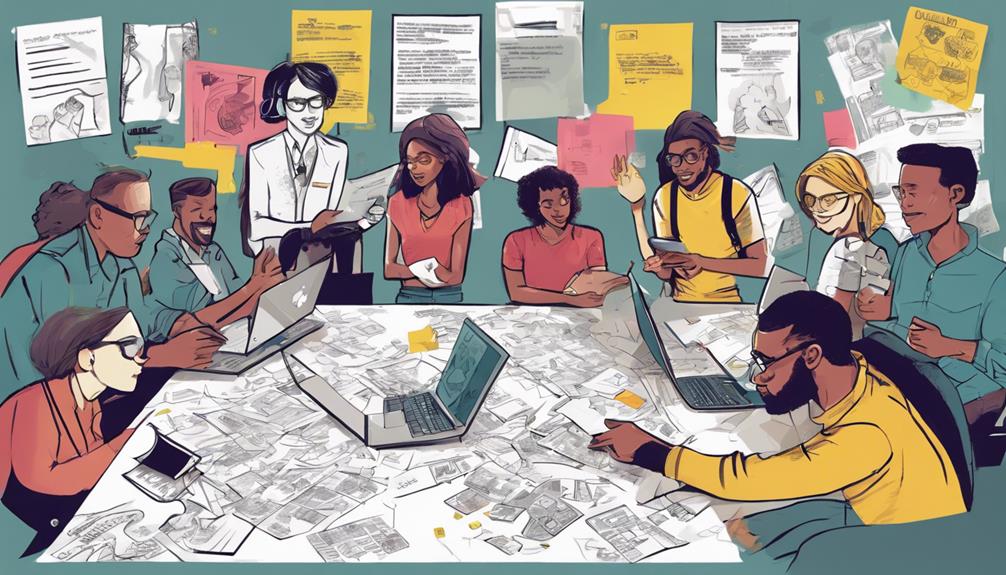
For further insight into the LUMA Design Thinking framework, explore the nuanced approach that underpins its methodology. LUMA Institute's focus on human behavior and user needs is at the core of its design process. By understanding the complexities of human behavior, LUMA methods guarantee that solutions aren't only innovative but also user-centric and effective.
Moreover, the integration of the LUMA System with Agile or Lean Six Sigma processes enhances the impact of the design thinking framework, making it adaptable to various organizational contexts. Expert instructors like Jesse Smith and Dustin Stiver bring a wealth of knowledge in teamwork, facilitation, and design to LUMA courses, enriching the learning experience for participants.
Additionally, LUMA Anywhere courses offer a structured learning environment with live sessions and collaborative assignments that aim to improve participants' collaboration skills.
The supportive LUMA Community further enriches the learning journey by sharing insights, success stories, and case studies, fostering a collaborative and innovative atmosphere for design thinking enthusiasts.
Innovating for People
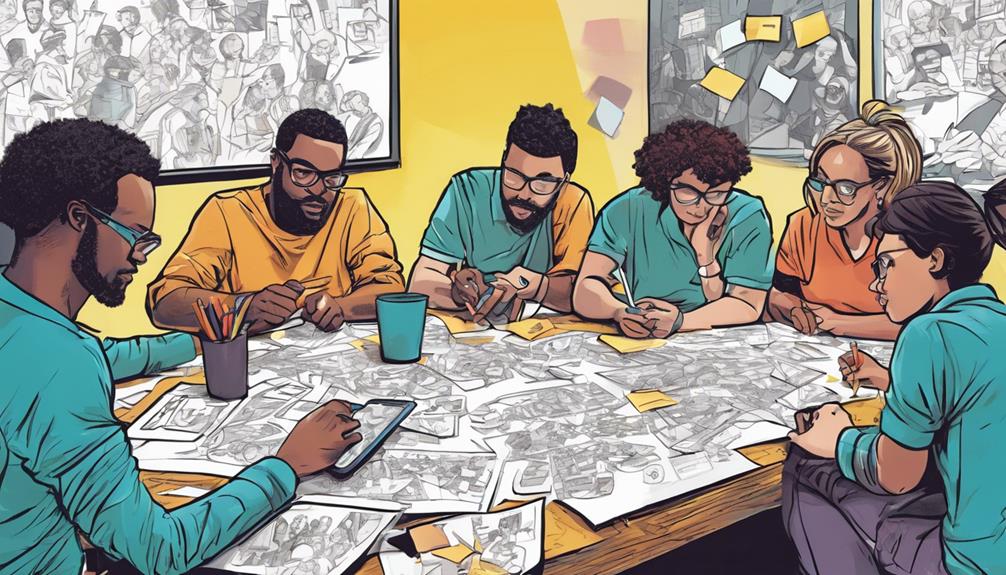
Engage with the human-centered design methods outlined in the 'Innovating for People' handbook by LUMA Institute to foster innovative solutions tailored to user needs. This handbook, introduced in 2012, contains 36 design methods categorized under Looking, Understanding, and Making.
Each method in the handbook includes clear overviews, photos, guides, hints, and benefits, providing a complete toolkit for design enthusiasts. Users appreciate the practical examples within the handbook, showcasing how methods can be effectively combined within the LUMA System for best results.
Here are some key highlights of the 'Innovating for People' handbook:
- 36 design methods for human-centered innovation.
- Categorized under Looking, Understanding, and Making.
- Clear overviews, photos, guides, hints, and benefits provided for each method.
- Practical examples demonstrating effective method combinations within the LUMA System.
Download an Excerpt

Access a sneak peek of the 'Looking' section from the 'Innovating For People: Handbook of Human-Centered Design Methods' by downloading the available excerpt.
This excerpt dives into 12 observation methods under ethnographic, participatory, and evaluative research, providing detailed overviews, guides, hints, and benefits for each method. By exploring this content, you'll gain valuable insights into how to observe and understand people's behaviors, needs, and preferences to inform your design process effectively.
The PDF showcases the structured approach of the LUMA design thinking methodology, emphasizing the importance of putting people at the center of the innovation process. It offers practical examples and guidance on how to apply human-centered design principles in real-world scenarios, enabling you to create solutions that truly resonate with your target audience.
Downloading this excerpt will give you a glimpse of the rich content and methodologies presented in the full handbook, empowering you to enhance your design thinking skills and create more impactful solutions for human-centered design projects.
Innovating for People: Human-Centered Design Planning Cards
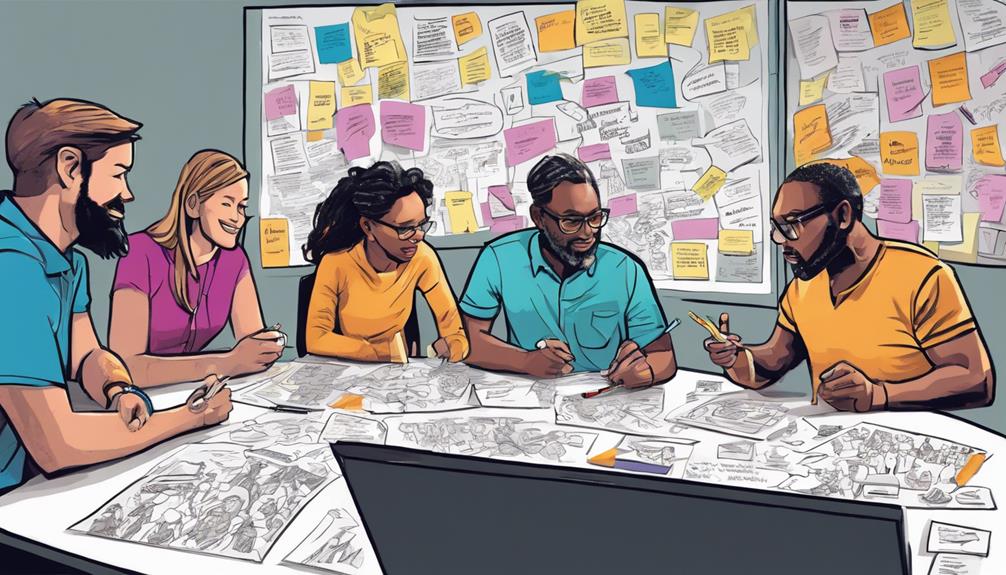
The Luma Institute offers practical Human-Centered Design Planning Cards, each featuring a method with a dedicated card providing a photo, description, guide, and hints. These cards are designed to enhance your design practice by focusing on the human experience within design processes.
Here's what you can expect from these innovative cards:
- Visual Aid: Each card includes a vivid photo to help you visualize the method.
- Clear Description: The description on the card explains the method concisely.
- Step-by-Step Guide: You'll find a guide outlining how to implement the method effectively.
- Helpful Hints: The cards also provide hints to optimize your use of the method.
These Human-Centered Design Planning Cards are a valuable resource for anyone looking to incorporate human-centric approaches into their design work. You can easily purchase them on Amazon to elevate your design thinking sessions and introduce new methods to your team.
Design Thinking Frameworks

Explore how Design Thinking Frameworks, particularly the LUMA System with its 36 human-centered design methods, provide a structured approach to innovation and problem-solving. The LUMA System, organized into three key skills – Looking, Understanding, and Making, emphasizes adaptability and practical application in the design process. This framework not only enhances creativity and collaboration but also assures that solutions are rooted in the needs of the end-users.
One of the strengths of the LUMA System is its integration with Agile or Lean Six Sigma processes, amplifying its impact on project outcomes. Additionally, LUMA offers a digital platform to access its methods, making it convenient for teams to apply these design thinking principles seamlessly.
Frequently Asked Questions
What Is LUMA Design Thinking?
LUMA Design Thinking is a human-centered framework with 36 methods. It emphasizes practicality, adaptability, and integrating with Agile and Lean Six Sigma. Rooted in empathy, collaboration, and innovation, it helps create user-centric solutions effectively.
What Is the LUMA Method?
When exploring the LUMA Method, you'll discover a structured approach to problem-solving and innovation. It encompasses 36 design methods that enhance team collaboration and creativity. Engaging with LUMA can revolutionize your team's workflow.
What Are the Principles of LUMA Design?
When exploring the principles of LUMA design, remember its core focus on solving people's problems effectively. Embrace collaboration, empathy, and iterative problem-solving. Prioritize user experiences, preferences, and needs for successful outcomes.
What Is the Purpose of Luma?
The purpose of Luma is to guide you in applying human-centered design principles effectively. It aims to enhance problem-solving by offering practical methods that prioritize collaboration and creativity. Luma's focus on people's experiences drives innovative solutions.
Conclusion
You've now explored the dynamic world of luma design thinking, like a vibrant puzzle waiting to be solved.
Dive deep into course offerings and formats, learn from experienced instructors, and discover innovative frameworks for human-centered design.
With the Innovating for People planning cards in hand, you're ready to tackle any design challenge with creativity and empathy.
So, go forth and release your creativity with luma design thinking!

